I never watched MacGyver. It’s not like I watched it once and thought it was junk and never went back. I just never watched it. It must’ve been on when I was busy doing something else. But I think it’s cool that his name has entered the lexicon as a verb. People I know from all walks of life use the word when they cobble together a temporary solution to a problem.
Sometimes the analysis team gets a scenario that we have to solve as a group. Usually the first analyst to see it will have a theory – or two – and just wants a second or third set of eyes to review the data and the thinking. We want to be confident that when we propose a remedy it, it’s going to be an efficient use of time and money and will resolve the problem. No MacGyvering.
First up is data from a Cessna P210 powered by a Continental IO-550TN with a Vitatoe mod, and data from an AuRACLE CRM 2100 with a 1 sec sample rate. EGTs on top, with CHTs and FF below.
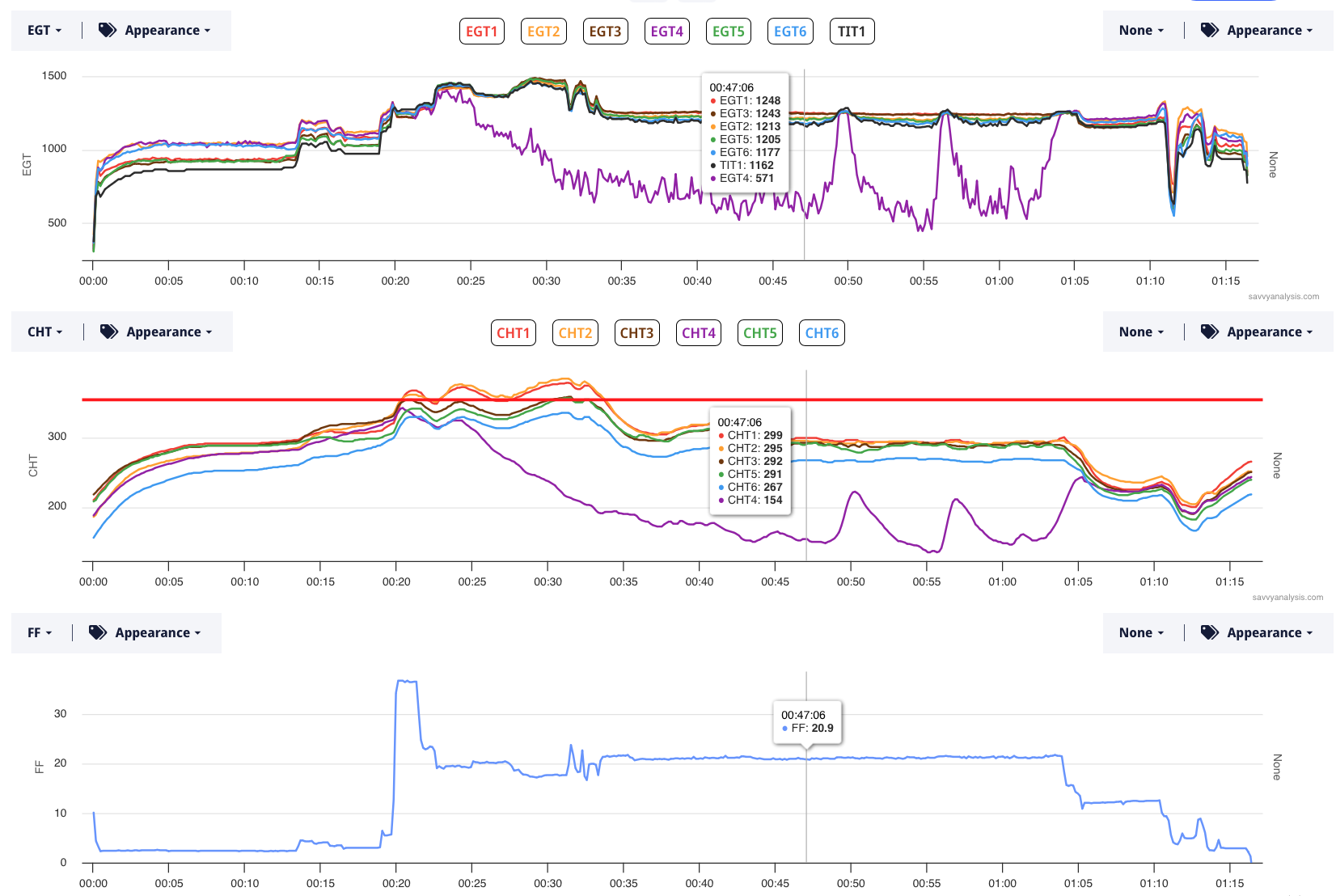
Cylinder 4 is the obvious problem, but there are a couple of details to point out. From engine start for the first 12 minutes during taxi out. EGT’s are split into 1-3-5 and 2-4-6 with the evens being higher. EGT’s remain split through the mag check and the pre-takeoff idle. Takeoff power is applied at 20 minutes and there’s less of a gap at full power. EGT four begins its drop when power is reduced about two minutes after takeoff, and CHT 4 drops along with it. When EGT’s split into odd and evens, it’s suggests a problem with induction. With a TN engine you have to consider the supplemental induction provided by the turbo.
Altitude isn’t logged but the client reported that he climbed to about 15,000 msl before leveling for cruise. Below is a screenshot of EGTs only with the cursor about 15 mins after takeoff.
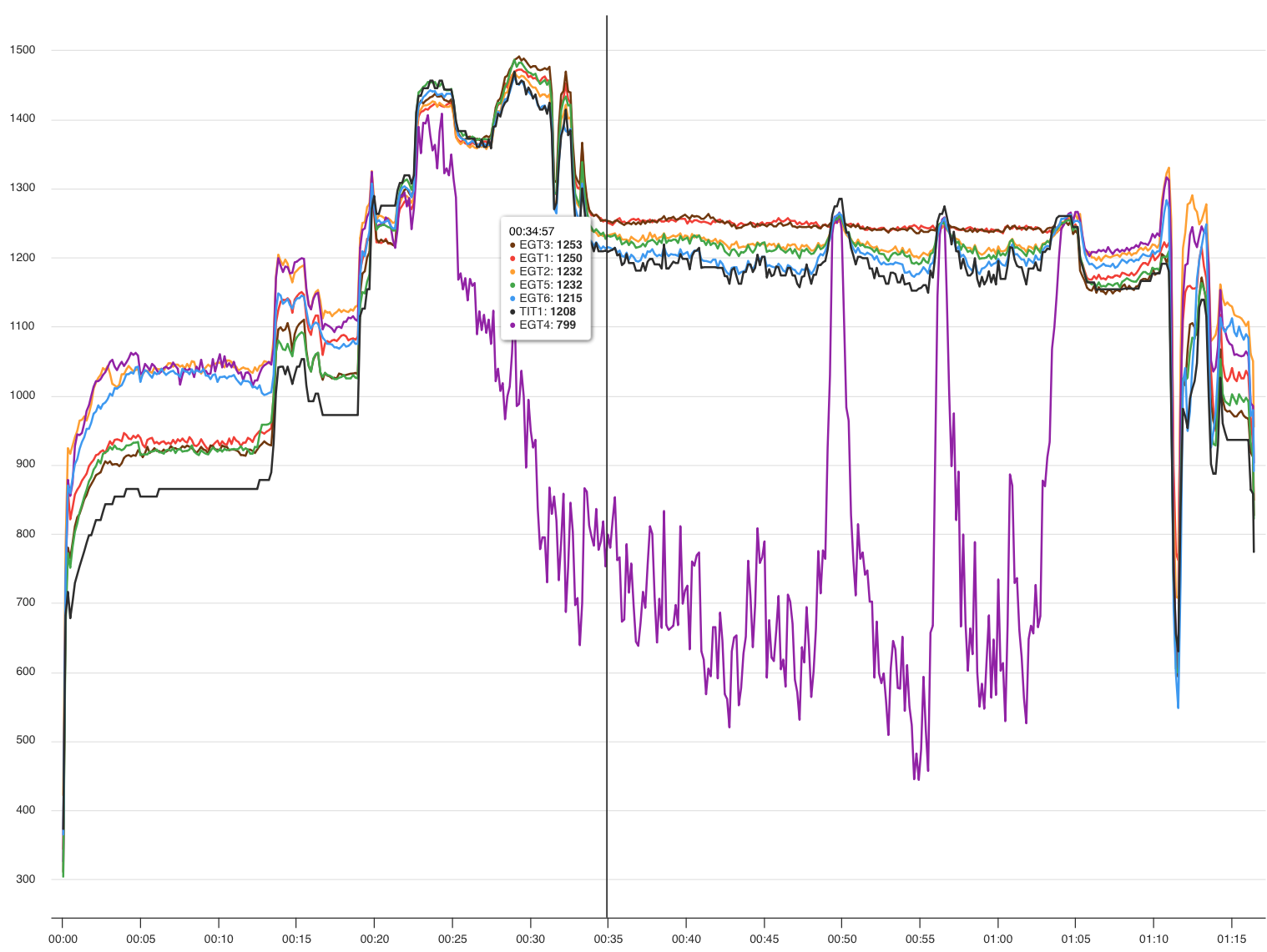
That’s about where the EGT trace settles into a pattern with peaks and troughs. Except for two notable excursions at around 50 and 55 mins, then a jump in EGT 4 just after the hour mark and it looks like it’s making normal power again. So if you had a wrench, where would you start? We think there is a pretty good argument for checking the induction and upper deck line around cylinder 4. Although I’ll admit we’re hard-pressed to explain the jumps at 50 and 55 minutes and the return to normal power.
Next up is data from a Piper PA-28R-201T Turbo Arrow III powered by a Continental TSIO-360 and data from a JPI 730 with a 1 sec sample rate. Here’s a two-hour flight with EGTs on top with CHTs and FF below.
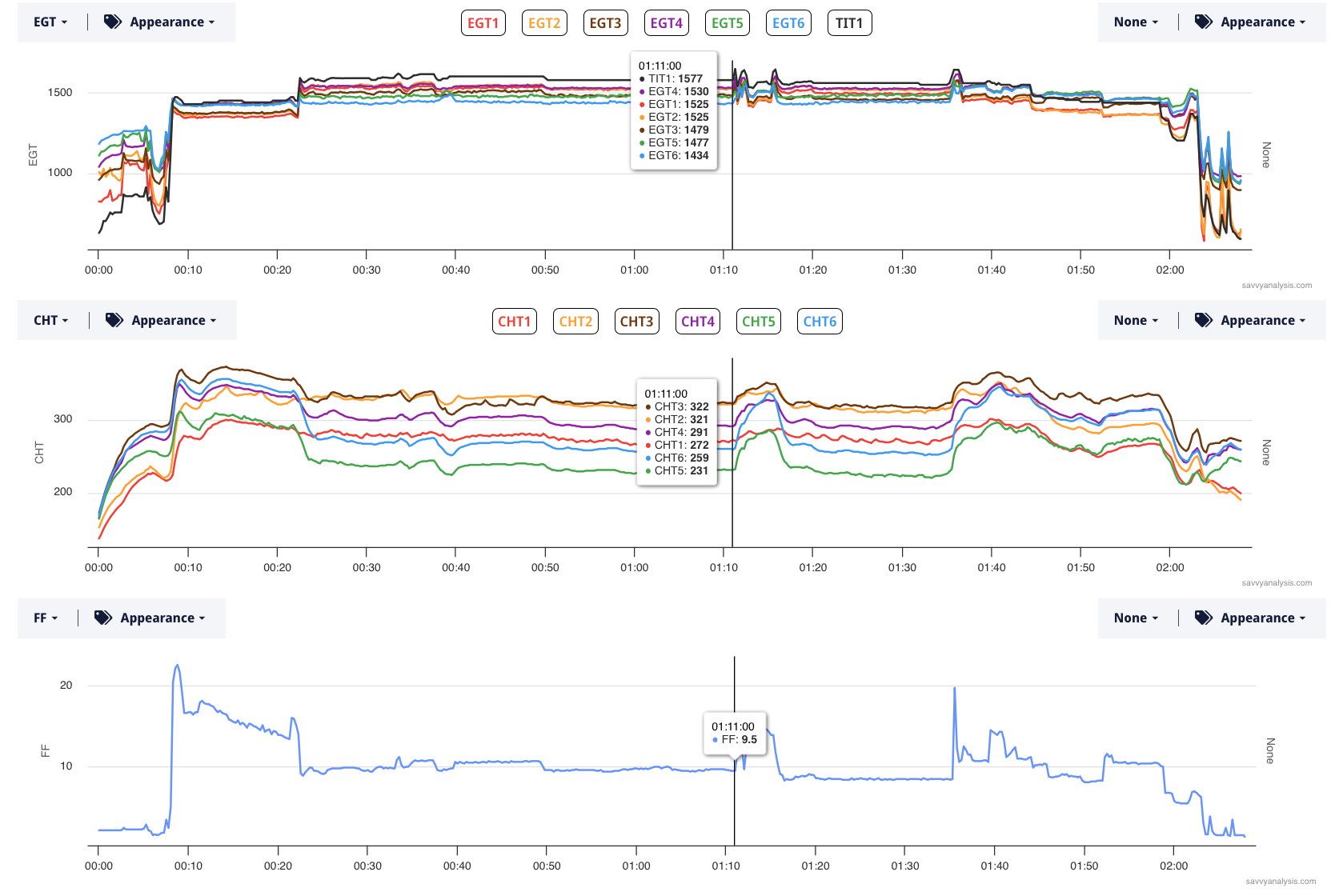
The report was roughness in cruise, and you can see the pilot trying different FF settings from the 20 min mark to the cursor at 1 hr 11 mins. At that point he executes a mixture sweep. Let’s zoom into that.
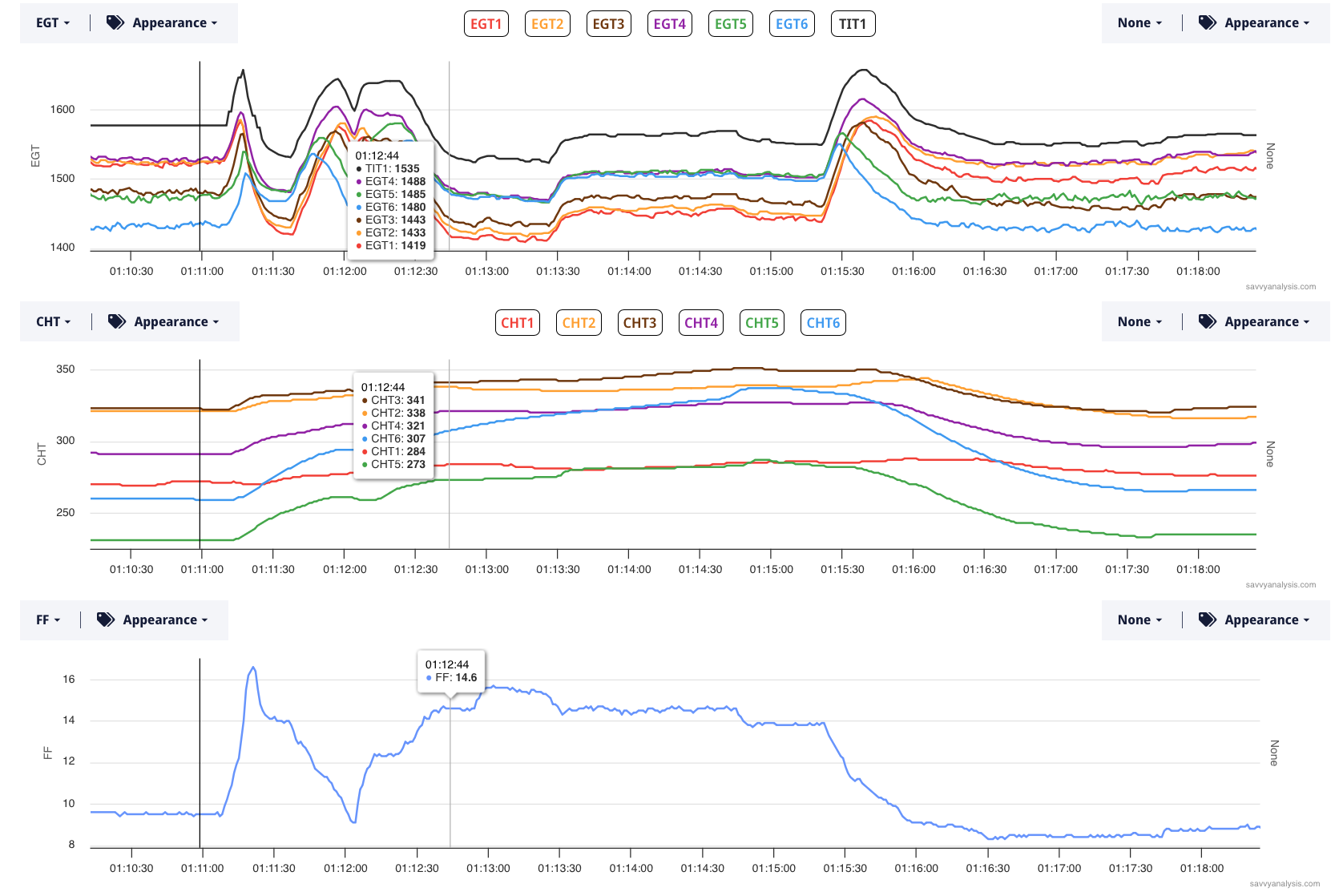
Zoomed in, it’s easy to see that EGTs 5 and 6 peak well ahead of the others on a rich to lean sweep – and later on a lean to rich sweep. We see another rich to lean sweep at one hour 15 minutes with the same pattern. We don’t really need corroborative evidence, but we have it. Cylinders five and six have been running cool because they were so lean. When FF is increased at 1 hour 12 minutes CHTs 5 and 6 climb a lot while the others climb a little.
It’s possible that that two injectors on opposite sides of the engine got clogged. If this were a big bore normally aspirated Continental odds would be good that the crossover tube at the front of the engine is leaking a little and causing the front cylinders to run lean. But this is probably two clogged injectors.
Next up is data from a 20 min flight from a Grumman American AA-5B Tiger powered by a Lycoming O-360 and data from a JPI 730 with a 6 second sample rate. EGTs on top with CHTs and FF below.
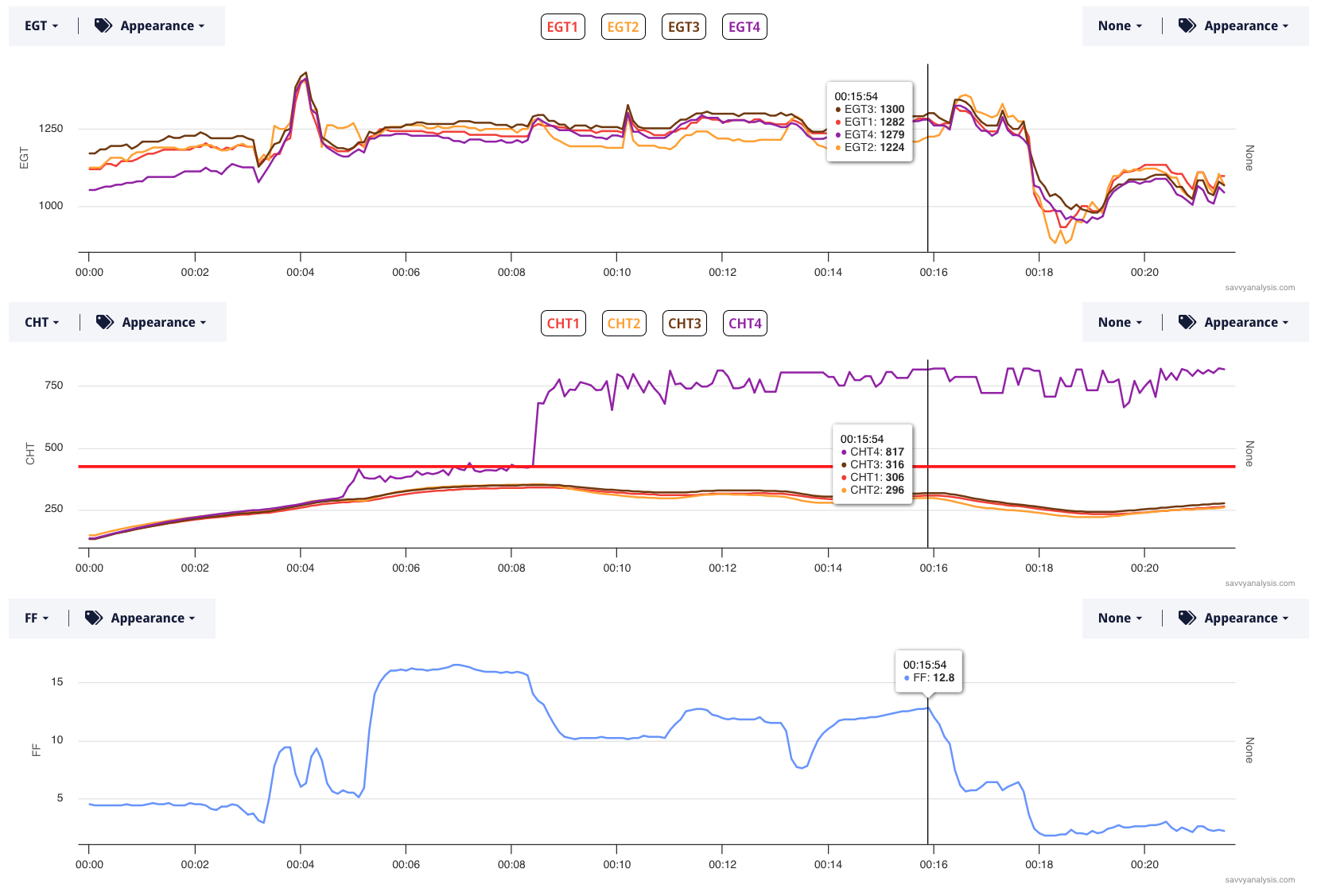
There’s nothing special about the cursor replacement. I just wanted to find a spot where CHT is near its highest value. CHT4 looks normal from engine start through the mag check then jumps up through takeoff and initial climb, then another big jump when FF is reduced for cruise. That big jump takes CHT into the 700-800º range, well beyond Savvy’s recommended redline of 420º and Lycoming’s published redline of 500º. This is test pilot stuff – if we can believe it.
The first jump is suspicious enough. That second nearly instant jump of about 200° defies the laws of physics and thermodynamics. The only way we see that kind of instant heat in CHT is with preignition, and there’s nothing in the EGT 4 trace during that time that indicates unusual combustion. We don’t know if this was supposed to be a longer flight and got cut short, or maybe it was always supposed to be a quick trip and return. Staring at a CHT value of 800 has to give you the heebie-jeebies, even if you’re convinced the numbers are bogus.
We’ll finish the month with a one hour flight from a Cessna 172 powered by a Lycoming IO-360 engine and data from an Insight G2 with a 1 sec sample rate. EGTs on top, with CHTs and FF below.
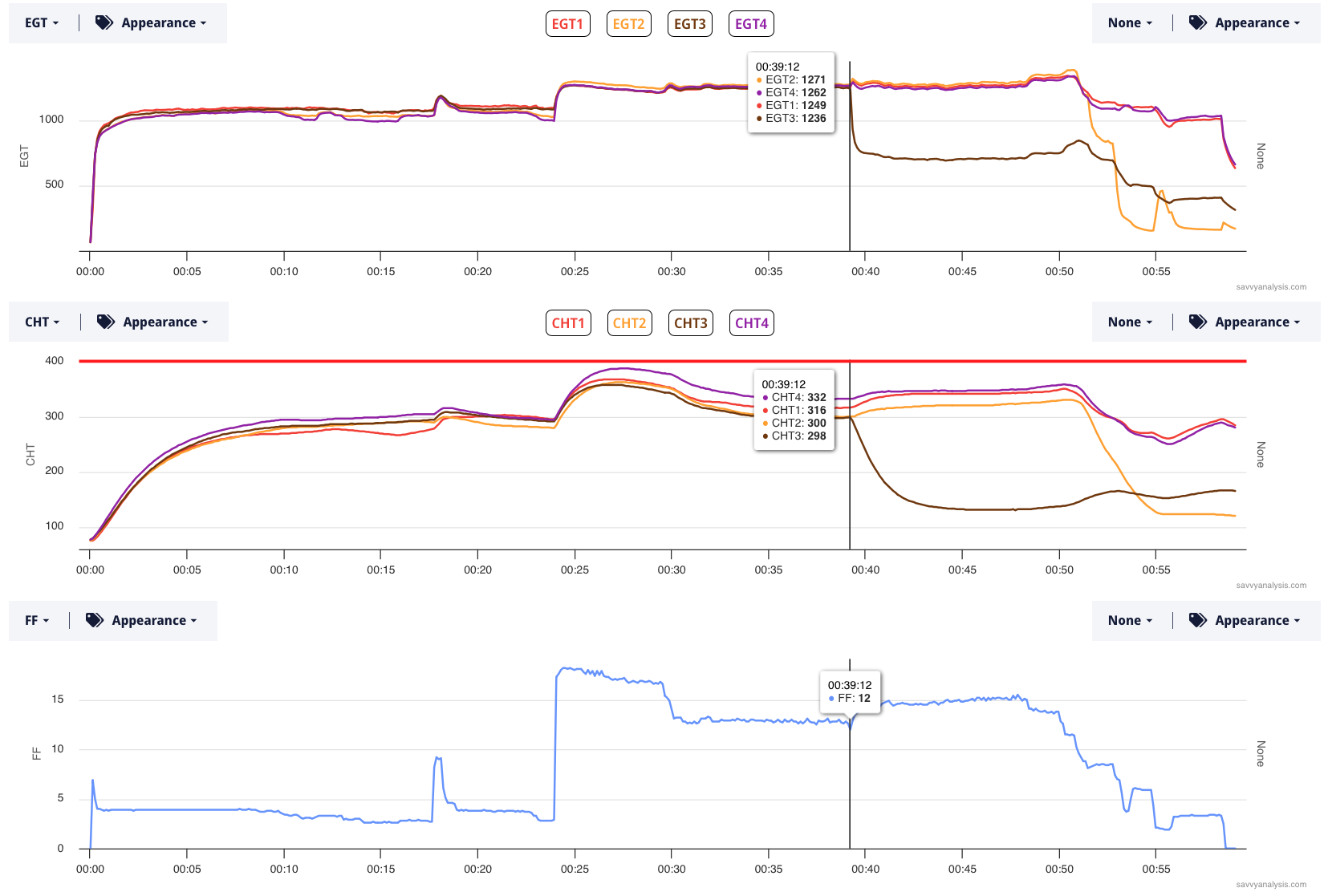
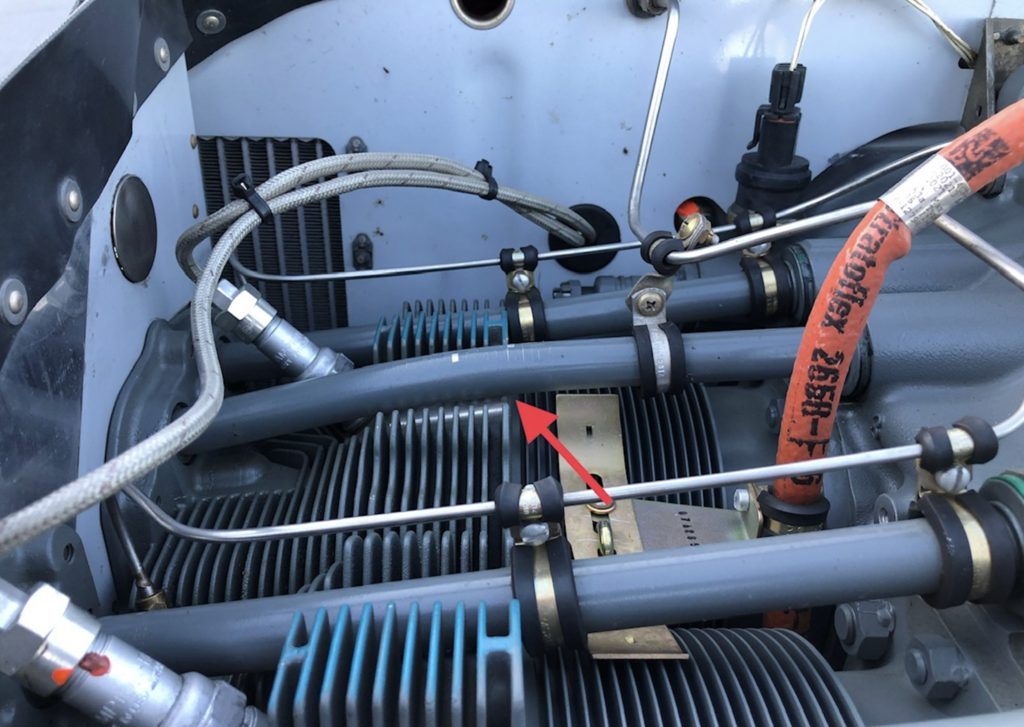
Takeoff is at 24 mins. About 15 mins later cyl 3 stops making power. The #3 exhaust valve stuck – open – and repeatedly struck the piston dome. Fortunately the airplane was still relatively close to base and got back on the ground safely. Usually the first question from someone submitting data with a stuck valve is some version of “Could we have seen this coming?” The cursor is covering up the data right before the event, but there’s nothing unusual there. EGT and CHT are a little on the low side from takeoff until the event, but not low enough to draw your attention or cause concern. Here’s a picture of the bent pushrod for cyl 3.